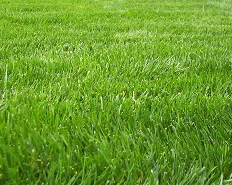Congratulations! You have survived another summer in the Valley of the Sun. Now, you can start thinking about your winter landscape plans because our OVERSEEDED SOD IS NOW AVAILABLE!
Right now we have overseeded Midiron available, and we hope to have Tifway, Tifgreen, and Santa Ana available on the 4th of November (this date is an estimate and can change due to growing conditions).
Also, we are getting a lot of questions right now regarding preparation steps, so listed is a quick guide on how to properly prepare your turf area.
- Clear away any rocks and debris.
- We recommend, but it’s not necessary, to add 1 inch of mulch (8 cubic feet per 1000 sqft) and incorporate it into the ground by tilling it in 4-6 inches. Most home supply stores offer tilling equipment for rent. If you have an existing sprinkler system, beware of your sprinkler heads and underground pipe when tilling.
- If you don’t have an existing sprinkler system, now would be time to install it.
- After the irrigation system has been installed, level your ground using a rake to its final grade. We recommend setting grade 1 inch below and sidewalks, driveways, and/or curb. This will keep water from running away from the turf.
- Water your ground, especially around the areas that have been trenched for irrigation lines. Make sure the ground is settled and backfill and regrade where necessary. You don’t want to install your sod without making sure your ground is firmly settled because once your sod is firmly established, it will be difficult to re-level the ground.
- Order your sod because now you’re ready to install!
If you need any clarification regarding sod preparation or have additional turf related questions please don’t hesitate to contact us. Our knowledge is here to help you with all your turf needs.

